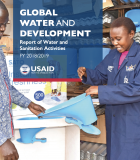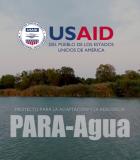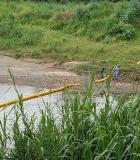Natural Infrastructure for Water Security in Peru (NIWS)
Activity Description
The Natural Infrastructure for Water Security in Peru (NIWS) activity, co-funded by USAID and the Government of Canada, aims to scale up gender-sensitive investments in natural infrastructure to strengthen water security and climate resilience in Peru. The activity addresses specific challenges to implementing natural infrastructure in Peru such as a lack of a robust project pipeline, a lack of capacity and guidance for designing sustainable, gender-inclusive projects, a lack of coordination across sectors, and insufficient financial resources in some regions. NIWS will demonstrate how well-managed natural infrastructure projects in Peru deliver water security benefits and are sustainable, cost-effective, and scalable.
NIWS has recently been extended until December 2027, with planned additional contributions from USAID of $15.2 million USD and $13 million CAD from the Government of Canada. The total expected investment by USAID and Canada in the project is now approximately USD $52.1 million over ten years.
Activity Objectives
- Ensuring policy synergy across ministries and departments by building a common vision for natural infrastructure in Peru and incorporating this into key policies.
- Generating water and socioeconomic information including differentiated impacts on men and women, required for project decision-making and support.
- Developing guidelines and tools to design plans, projects, and actions guaranteeing water, social, and economic benefits.
- Teaching the design, evaluation, monitoring, and management of natural infrastructure projects of natural infrastructure projects to water utilities, watershed councils, regional governments, and local communities.
- Designing, testing, and implementing new financial models to mobilize funds.
- Building integrated natural-gray project portfolios in priority watersheds to increase investment.
In its first phase (2017–2023) NIWS achieved the following:
- Developed a portfolio of over 80 natural infrastructure projects valued at over US $440 million with local funders and over 240 local communities, with $20 million of investments from that portfolio already invested.
- Strengthened capacities of more than 5,000 professionals to develop, manage, monitor, and communicate investments in natural infrastructure for water security.
- Increased credibility and clarity for decision-makers regarding the water benefits of natural infrastructure interventions, including original research and a series of systematic reviews.
- Developed a suite of new tools to guide the identification, design, and management of effective, equitable and sustainable interventions in natural infrastructure.
- Strengthened a common, multi-sectoral vision for natural infrastructure for water security in Peru, which contributed to improvements to over a dozen policies, plans, and regulations and recommendations from the OECD Water Governance Initiative for strengthening financing for NI.
- Strengthened the capacity of institutions to develop and implement natural infrastructure projects, such as reducing the time from idea to agreement for these projects by Lima’s water utility by 73 percent.
- Secured the first institutional commitments and policy changes from the leading authorities in Peru’s water sector to address gender gaps in water management.
- Recognized, trained, and connected over 100 women leaders through the Leadership Program for Women in Water Management.
Related Links
- Fact Sheet: NIWS
- Forest Trends Activity Page
- Article: The Infrastructure Upgrade, Reimagined
- Peru | Globalwaters.org






